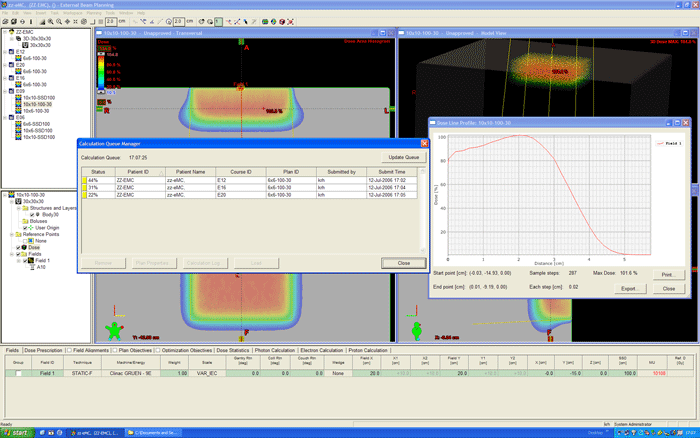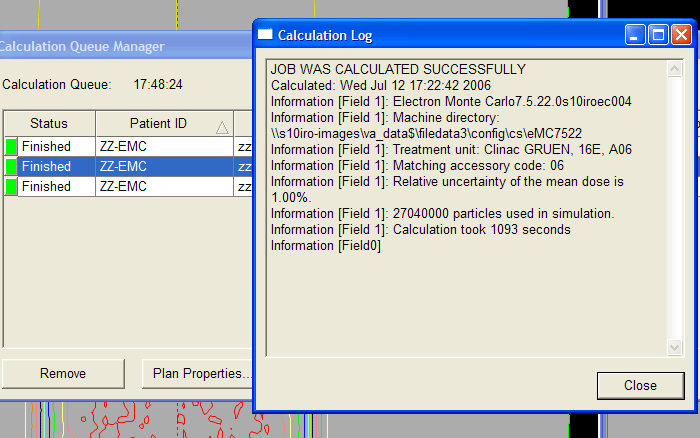The beam verification set consists of a series of dose distributions which goes beyond the beam characterisation set, because it shall be used to test the algorithm. It contains more depth dose and profile data than the curves needed for the configuration (more combinations of field size, energy, SSD and so on).
The beam verification set also contains oblique beams and is not restricted to the water phantom. Heterogeneities, non-flat surfaces, missing lateral scatter etc. are also checked. The only question is: what verification checks belong to the standard program every department should follow, and what checks should be left to the vendor or academic institutions who usually have more resources for such a task? The paper of Ding (2006) covers many aspects of dose behind heterogeneities: if one believes the findings in the paper (and I see no reason why I should not do it), one can skip most of the heterogeneity checks, because the algorithm was verified in this respect by someone else.
There are two groups of Setups checked by us:
- The homogeneous set consists of dose distributions in water. All calculations are done in a synthetic 30x30x20cm phantom with 1mm slice thickness, filled with 0 HU. The corresponding measurements are performed in the PTW MP-3 water phantom, with appropriate detectors (Roos chamber for depth dose and output factors, solid state electron diodes for the profiles.
- The inhomogeneous set uses CT-scanned phantoms with heterogeneous buildup (cork, air, PMMA). The 2D-ARRAY seven29 is the measurement device. All calculations are done on the CT-scanned pantom after import in Eclipse. The measurements use the identical setup, since the measurement device is part of the scanned phantom.
The Calculation Options in Eclipse are chosen with an accuracy high enough to test the algorithm with reasonable calculation time:
- Calculation Grid: 2mm
- Medium Gaussian 3-D smoothing
- Accuracy: 1%
- Number of particles: 0 (Automatic - calculates until desired accuracy goal is reached)
- No normalization
Grids down to 1mm are possible, but the calculation time for a large number of plans would be quite high.
The Calculation Queue

I always distribute the plans on different calculation servers to distribute the computing load. The job can be sent to the queue via Shift+F5, the queue can be looked at via Ctrl+F5. In the current version of Eclipse, the server on which a certain job is running cannot be seen in the Calculation Queue Manager. This would be a nice feature in a future release (automatic grid computing - the network is the computer - would be even better).
When the job is finished and loaded, the Log displays information about the calculation time and the number of particle histories. The calculation was done on s10iroec004 (calculation server number 4) with eMC 7.5.22:
